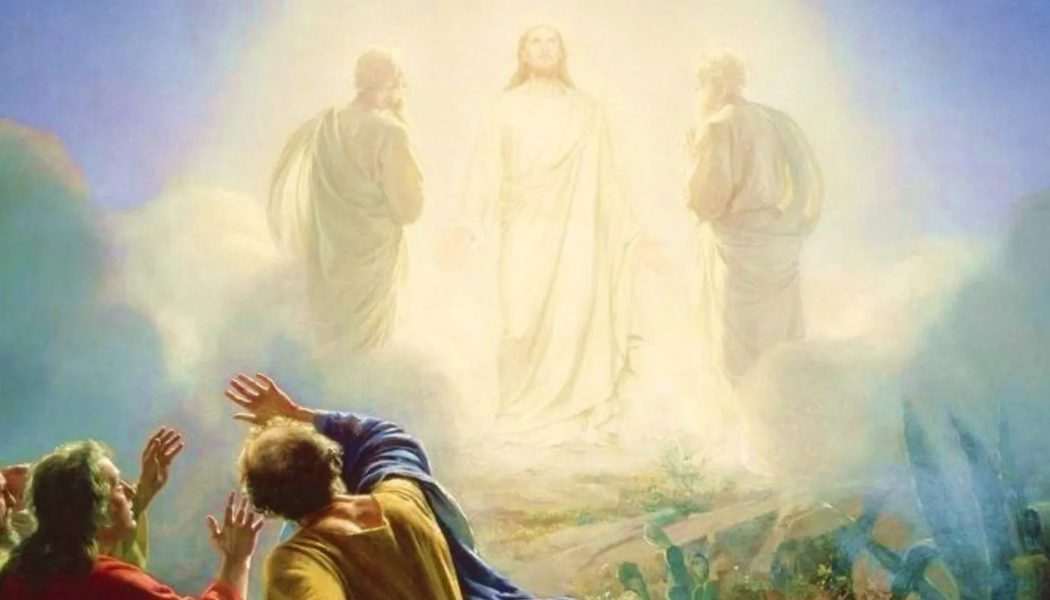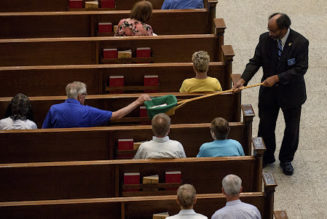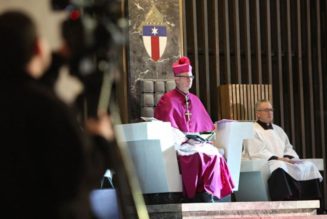
On Sunday, Aug. 6, the Church celebrates the Feast of the Transfiguration of the Lord, which is a prime example of one of the two kinds of problems we 21st century Catholics face in grappling with Gospel stories.
One problem is, we can’t stand it when stories sound wild and crazy and counter-rational. The Transfiguration story is like that: It seems like a fantastical story stripped from mythology rather than the kind of sober, rational demonstration of Jesus’s wisdom that we prefer.
What’s the second problem we face? Ironically, it’s that Gospel stories are too rational. We say, “If God became man, you’d expect something spectacular and astounding. You’d expect lightning to come out of his fingers like Zeus or you’d expect him to have super-powers like a Marvel hero.”
While these two problems clearly contradict each other, they both reflect good instincts.
I think I found an answer to both when I covered the Transfiguration for The Extraordinary Story.
It is has been an amazing experience going through the life of Christ in my weekly podcast. I am confronting the Gospel and asking the question: Have these stories lost or gained power in light of what we have learned about human beings and our world in the 21st century?
Actually, the podcasts have gotten more personal and dramatic than I expected. I have also been witnessing remarkable coincidences as just the right piece of information comes to me exactly when I need it. So it was that a student, Oscar Shingledecker, brought the C.S. Lewis essay “Transposition” to my attention just as I was getting to the episode about the Transfiguration.
I needed some rational way to understand this story. For instance, Sunday’s first reading is from the Book of Daniel, which was extremely popular at the time of Christ. That book describes the prophesied Messiah as an enthroned being with “head white as wool” and “throne with flames of fire.” He sounds like Elijah returning the way he left, “with wheels of burning fire.” But the Messiah “receives dominion, glory and … his kingship shall not be destroyed.”
For the Scripturally minded, the fact that Jesus appears like this in Sunday’s Gospel is a mark in the story’s favor; a clear fulfillment of a prophecy. For the skeptical, it is a bit suspicious that his apostles claimed to see him looking just like Daniel did.
Enter C.S. Lewis.
In “Transposition”, Lewis is talking about supernatural manifestations of God the Holy Spirit, not God the Son, but his words apply to any number of supernatural phenomenon.
He speaks of the problems inherent in “transposing” one manifestation of something to another medium. For instance, “If you are to translate from a language which has a large vocabulary into a language that has a small vocabulary, then you must be allowed to use several words in more than one sense,” he writes. Also: Trying to convey a three dimensional image in a two-dimensional drawing can be perfectly coherent by using perspective — until you stop and realize you just as easily see the thing as a strange admixture of crossing lines in two dimension.
In the podcast, I had earlier compared our experience of the light of Jesus Christ to Plato’s Cave. In the philosopher Plato’s thought experiment, someone who lived in a cave and only experienced shadows of the real world would have a very hard time emerging out into the light and seeing things as they are.
Well, in the Transfiguration we have the opposite case: a being from the heavenly realm entering the cave, a place where, as St. Paul says, “At present we see indistinctly, as in a mirror.” For a being in heavenly glory to appear to us in a comprehensible way, there would need to be a transposition — a demonstration in our limited visual language about a truth better suited to the being’s richer, spiritual language.
Transposed, we can expect that the Son of God would look like fire, or that his majesty would convey as a throne, and that his heavenly friends would glow.
God is not really fire, but apparently fire shows a truth about God. He reveals himself in the flaming urn of Abraham, the burning bush of Moses, the pillar of fire in the desert, Elijah’s chariot and the Son of Man protecting Shadrach, Meshach and Abednego in the furnace. The figure of the Son of Man in Daniel on a fiery throne or Jesus Christ aglow in the Transfiguration is, thus, a clear transposition of the Divinity of Jesus, the Messiah.
And then it occurred to me we have all seen a transposition of Jesus transfigured.
We have all experienced things that are of the same kind, if not the same degree as the transfiguration. I share several in the Transfiguration episode of th epodcast, both astonishing ones (miraculous manifestations of God my wife and a friend witnessed) and everyday ones (such as intense nostalgia), each of which changed those who experienced them such that they have remained faithful to God ever since.
That was the intent, and, ultimately, the effect of the Transfiguration. It was a “transposition” that used the visual language we have available to us to show us something we couldn’t grasp: God is utterly unlike us, enormous and exciting, outside of time and space.
Just as the printed word “tree” is ink on paper and not a tree; and the spoken word “tree” is a vibration in vocal cords, air, and eardrum and not a tree; and a photo or child’s drawing is not a tree; and even the light bouncing off a tree into my eye is not a tree — they all truly say “tree” and mean something real.
In the same way, seeing God glowing on a mountaintop, or in a host, or in a memory, or in gratitude — is not an instance of “seeing the Divine”, since God is not visible but supernatural. But it all shows us something real and profound about the real God, as he truly is.
So when Jesus, Moses and Elijah glowed on a mountaintop and a voice thundered from heaven, it seemed like a “cleverly devised myth”, but wasn’t.
St. Peter himself seems to have the same worry that this story sounds fantastical. He would later write what is in the Second Reading at Mass this Sunday: “We did not follow cleverly devised myths … but we were eyewitnesses of his majesty. … We ourselves heard his voice come from heaven while we were with him on the holy mountain.”
He is saying, “Really, truly; I know it sounds crazy, but this is what we saw and heard!”
But then St. Peter strains for a “transposition” of his own to explain what he wants to explain. He mismatches aural, visual and astronomical metaphors to say: “We possess the prophetic message that is altogether reliable. You will do well to be attentive to it, as a lamp shining in a dark place, until day dawns and the morning star rises in your hearts.”
What’s that message that is “altogether reliable” and leads to such glory?
Simple. We heard it in the Gospel: “This is my beloved Son, with whom I am well pleased; listen to him.”
Jesus is God, truly present among us both back then on Tabor and right now in the Tabernacle, and he will do almost anything to get our attention to start living up to the true potential of who we are — beings who could one day glow like a heavenly creature … in a “transpositional” manner of speaking.
Click here for The Extraordinary Story podcast on the Transfiguration..
Listen to “The Extraordinary Story with Tom Hoopes” wherever you listen to podcasts: click here for Apple Podcasts, Spotify, Audible or Podbean.









